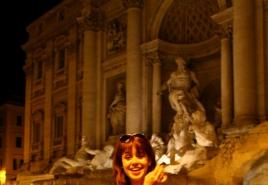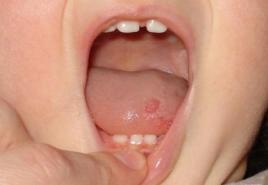Taxis. Positive taxis Indicate the process definition negative taxis
the instinctive form of the spatial orientation of animals, mechanical orienting components of behavioral acts, innate ways of spatial orientation:
1) towards vitally favorable conditions and irritations external environment (taxis are positive);
2) away from unfavorable ones (taxis are negative). For example, moving towards everything that looks like food and everything that is unpleasant. In plants, similar reactions are expressed in changes in the direction of growth and are called tropisms.
The modality of influences and reactions with respect to diverse components differ:
1) phototaxis - reactions to light;
2) chemotaxis - to chemical irritants;
3) thermotaxis - for temperature changes;
4) geotaxis - on the force of gravity;
5) hydrotaxis - for the flow of liquids.
Taxis of unicellular and many lower multicellular animals are represented by orthotaxis - reactions to acceleration or deceleration of movement, and clinotaxis - reactions to a change in the direction of movement at a certain angle.
Taxis are usually characteristic of unicellular organisms without a nervous system, but they are also observed in some more highly organized species. Their manifestation is maximal in protozoa, moderate in worms and insects, and disappears already in primitive mammals.
In animals with a developed central nervous system and symmetrically located sense organs, in addition, an active choice of the direction of movement and the preservation of this direction are possible - topotaxis. They are constant components of even the most complex forms of behavior.
Taxis
from the Greek. taxis - order, location) - innate mechanisms of the spatial orientation of the motor activity of animals in the direction of favorable vital conditions of the environment (positive T.) or in the direction from unfavorable (dangerous) conditions for life (negative T.). In plants, similar reactions are expressed in a change in the direction of growth (tropisms). The nature of orientation depends on the effect of biologically significant agents of the environment, and therefore T. are subdivided into photochemo-, thermo-, geo-, anemo-, hydrotaxis, etc. (reactions to light, chemical stimuli, temperature changes, force gravity, air flow, flow of liquids, humidity of the environment, etc.). The degree of complexity and functions of T. depend on the level of evolutionary development of animals. Lower T. - orthotaxis (acceleration or deceleration of movement) are characteristic of unicellular and many lower multicellular animals.
In animals with developed AD. from. and symmetrically located sense organs, it is possible to actively choose the direction of movement and maintain this direction (topotaxis). Such T. are permanent components of even complex forms of behavior. Wed Kinesis.
Taxis
Word formation. Comes from the Greek. taxis - order, location.
Specificity. In accordance with them, movement begins either in the direction of favorable, vital elements environment (positive taxes), or from unfavorable ones (negative taxes).
Phototaxis as reactions to light
Chemotaxis for chemical irritants,
Thermal taxis for temperature changes,
Geotaxis for gravity,
Hydrotaxis for the flow of liquids.
For unicellular and many lower multicellular animals, the following are characteristic:
Orthotaxis, as reactions to acceleration or deceleration of movement,
Clinotaxis, as a reaction to a change in the direction of movement at a certain angle.
From territorialism that goes back to animals, let us turn to taxis - plant movements. We go even further, plunge even deeper into the archaic layers of our psyche. From the motive-zoology, we pass to the motive-botany.
"Taxis are ordered free movements caused by external stimuli" (R. Vainar, 1987, p. 48).
If the movement takes place in the direction of the source of irritation, we have a positive taxis. Otherwise, they speak of a negative taxis.
Take, for example, the purple bacterium Thiospirillum. At one end, it has a bundle of flagella. As soon as this end of the spirilla falls into darkness, it reverses the movement, and the bundle of flagella turns in the opposite direction (Fig. 3.3).
Fig. 3.3.Positive photophobic response of Thiospirilum (after: Vainar R., 1987, p. 49)
Position 2 - entering the bright field,
positions 4 and 7 - feedback
on the border between light and dark fields
It seems that spirilla is "afraid" of the dark. However, trying to "escape" from the darkness, she continues to move along the illuminated field, until she again finds herself in a darkened area. Then the bacterium unfolds and again "escapes" from the darkness. So gradually it goes to drift in the illuminated area.
The illuminated field in which bacteria gather is called a light trap. If the illumination becomes too strong, bacteria leave the field (after: Vainar R., 1987, pp. 49-50).
Spirilla's movements are a typical example of a photophobic response. “Topotaxis and phobotaxis are distinguished by the nature of the response. If topotaxis is a deliberate change in the direction of movement, then phobotaxis gives the impression of a "reaction of fear" ("phobos" in Greek means "fear"), and at the same time the body falls into the area of \u200b\u200boptimal action of the stimulus, so to speak, in a roundabout way "(Vainar R. , 1987, p. 48).
For the purposes of motivational training, it is sufficient to divide taxis into positive and negative ones. If desired, however, the concept of phobotaxis can also be used, meaning chaotic movements in response to a frightening stimulus.
Various types of taxis in biology are given in table. 3.2 (after: Vainar R., 1987).
Table 3.2
Taxis species in biology
The end of the table. 3.2.
|
Taxis name |
The nature of the actions called | ||
|
Temperature |
Thermotaxis | ||
|
Electricity |
Galvanotaxis | ||
|
Gravity |
Geotaxis | ||
|
Hydrotaxis | |||
|
Touch |
Tigmotaxis | ||
|
Traumatotaxis |
Negative |
A person also has a tendency towards automatic actions, due to the attractiveness or repulsiveness of an external stimulus. At the same time, the attractiveness of the stimulus does not at all mean its unconditional biological usefulness for the organism. The disgustingness of the stimulus is also subjective and is by no means always associated with the objective biological harmfulness of the stimulus.
It is important for us to establish that certain stimuli under certain conditions almost automatically cause certain actions in people in general or in a given particular person, and this automatism is insurmountable or very difficult to overcome, even if it is realized.
The automatically arising desire to approach the stimulus or move away from it, we will call it a taxis. Taxis are named according to the characteristics of the stimulus that triggers them.
Table 3.3 shows four types of taxis that I have established in the process of working on the literature and on the basis of my own experience.
Table 3.3.
Presumptive types of taxis in humans
|
Taxis name |
The nature of the actions called | ||
|
Neo-taxis (reflex of novelty) |
Positive - movement towards a new stimulus |
The desire to approach a new subject, consider it, test its capabilities |
|
|
Charisma 1 (in the simplest case, beauty) |
Charisma Taxis |
Positive - movement towards and behind a charismatic personality |
Striving to approach and keep up with an attractive person |
|
Wasting time |
Chrono Taxis |
Negative - moving away from a situation in which everything is going too slowly |
The desire to avoid dragging out work, lengthy explanations for others, slowness of someone's reactions, actions, etc. |
|
Limiting space and time |
Limit Taxis (Freedom Reflex) |
Negative - movement away from and out of narrow boundaries (tight spaces, constraining time frames, symbolic restrictions imposed by rules, etc.) |
Refusal to work always in the same place, struggle against the assigned rigid regulations, attempts to circumvent or violate the rules and restrictions |
1 Charisma is the ability to attract people to yourself, captivating them with your personality and your goals.
A charismatic personality is a person whose goals one wants to recognize as their own (Oxford Advanced Learner's Dictionary, 1982).
In the process of teamwork "Taxis" (Day 2), the participants of the first training group in Moscow ("Arsenal", September 1999) identified other taxis, which then, during the last one and a half days of the training, "worked" - the participants noticed their manifestations , referred to them, describing previous experiences, tried to evoke them, motivating other participants. This list is shown in table. 3.4.
Table 3.4
Taxis types identified in the first group of motivational training in Moscow
Continuation of table 3.4.
|
Taxis name |
The nature of the actions called | ||
|
Audio Taxis |
Positive or negative - moving towards or away from the sound |
Music - pleasant or unpleasant, too loud, etc. |
|
|
Information |
Info Taxis |
More often positive, but it can be negative - movement to the source of information or away from it |
Knowledge is power, information increases the possibilities of influence and development, but at the same time "who multiplies knowledge, multiplies sorrow" |
|
Material values |
Mat taxis |
Positive - movement towards money, material values |
Moving to where there is more value |
|
Color-taxis |
Positive or negative - movement towards or away from the color stimulus |
Attractive or repulsive coloring of premises, things |
|
|
Rhythmo Taxis |
Positive or negative - movement towards or away from the source of the rhythm |
Rhythmic music, metronome, rhythmic work of the organization |
|
|
Good food |
Gourmet Taxis |
Positive, although in rare cases can be negative - movement towards food (if a person is on a diet - from it) |
The desire to get closer to the food source; striving to work for an organization that provides good food |
|
Gourmet Taxis |
Positive, although in rare cases it can also be negative - movement towards food (if a person is on a diet - from it) |
1) Attracting customers to the Ramstore store with pleasant smells; 2) Lighting incense sticks in the office; 3) The smell of coffee in the reception area; 4) The pungent smell of chemicals in the photo printing laboratory ("so as not to spy on secret documents"), etc. |
|
|
Erotic object |
Eroto Taxis |
Positive or negative - movement towards or away from an erotic object |
"I want to work in an organization where there are people of the opposite sex" or: "He is too attractive, it is better to stay away from him." |
The end of the table. 3.4
|
Taxis name |
The nature of the actions called | ||
|
Uncertainty |
Taxis incognito |
Negative - movement from uncertainty (very rarely - positive: in people who "want to increase the level of adrenaline in their blood" - movement towards uncertainty) |
Lack of clarity about the meaning of other people's actions, situations, for example: “Courses start today. Won't you go to the courses? Then I put you on another list. " |
|
Chief |
Boss Taxis |
Movement towards or away from the boss |
The presence of the boss determines direction of travel, for example: "Ivan Ivanitch will be there." - "Then I'll come too." |
Comparing table. 3.3 and 3.4, we see that some taxis overlap to some extent, for example, rhythm-taxis and limit-taxis, boss-taxis and charisma-taxis, info-taxis and neo-taxis.
However, these coincidences are only partial. The rhythm-taxis coincides with the limit-taxis only if the rhythm is considered broadly, for example, as the rhythm of the organization's work. Boss Taxis and Charisma Taxis do not always coincide, since not every boss is charismatic.
Info-taxis and neo-taxis do not always coincide. A new stimulus attracts, but it is not always clear what new information it carries, this is only a signal about presumably new information, but not this information itself. On the other hand, an info-taxis may reflect a desire not so much for new information as for accurate information, since an approximate one is already available.
Given that the listed taxis do not completely match, it is useful to keep this entire list. During the training, it will be possible to refer to those taxis that were opened by the previous groups. Undoubtedly, it will be useful to replenish the list of taxis at each new training session.
Movement towards the stimulus.
Source: "Dictionary of Botanical Terms"
I.A. Dudki, Kiev, Naukova Dumka, 1984
Nikolai Avgustovich Monteverde (1856-1929) - botanist, graduated from the course at St. Petersburg University, specialist in the field of plant physiology, was the chief botanist of the Imperial St. Petersburg Botanical Garden. The book of N.A. Monteverde became an atlas of Russian flora. It includes plants typical both for the European part of the Russian Empire and for its outskirts, for example, the Caucasus, Siberia or Turkmenistan. The book is also supplemented with a convenient reference and bibliographic section. Reproduced in the original author's spelling of the 1916 edition (publishing house "Petrograd. Edition of A. F. Devrien").
 In the "Botanical Atlas" the reader will find a description of about 800 species of agricultural and wild plants, including the main agricultural crops, tree species, medicinal, ether-bearing, weeds and other plants that have one or another national economic importance and are also widespread in the territory USSR. Tables The Atlas is illustrated with 149 multicolor tables and 57 figures. Colored images of plants convey not only the shape and relative size, but also their natural color. The material in the atlas is arranged in a systematic order, in accordance with modern ideas about the evolution of the organic world. For agronomists, livestock specialists, foresters, teachers, ethnographers, students, pupils high school and many people who are in contact with plants and who are interested in them in their activities, the "Botanical Atlas" will be an interesting and useful illustrated guide to understanding the plants of our country. Reproduced in the original author's spelling of the 1963 edition (Selkhozizdat publishing house).
In the "Botanical Atlas" the reader will find a description of about 800 species of agricultural and wild plants, including the main agricultural crops, tree species, medicinal, ether-bearing, weeds and other plants that have one or another national economic importance and are also widespread in the territory USSR. Tables The Atlas is illustrated with 149 multicolor tables and 57 figures. Colored images of plants convey not only the shape and relative size, but also their natural color. The material in the atlas is arranged in a systematic order, in accordance with modern ideas about the evolution of the organic world. For agronomists, livestock specialists, foresters, teachers, ethnographers, students, pupils high school and many people who are in contact with plants and who are interested in them in their activities, the "Botanical Atlas" will be an interesting and useful illustrated guide to understanding the plants of our country. Reproduced in the original author's spelling of the 1963 edition (Selkhozizdat publishing house).
 "Botanical Atlas" by N.P. Zhivotovsky (1846-1888) - one of famous books in natural sciences in pre-revolutionary Russia... For almost twenty years, the author gave it to the Pedagogical Museum of St. Petersburg, published various works on botany and natural sciences. Zhivotovsky studied at the natural department of the Physics and Mathematics Faculty of St. Petersburg University, from which he graduated in 1868 and soon joined the main department of military educational institutions. In 1871, the Permanent Commission of the Pedagogical Museum was established
"Botanical Atlas" by N.P. Zhivotovsky (1846-1888) - one of famous books in natural sciences in pre-revolutionary Russia... For almost twenty years, the author gave it to the Pedagogical Museum of St. Petersburg, published various works on botany and natural sciences. Zhivotovsky studied at the natural department of the Physics and Mathematics Faculty of St. Petersburg University, from which he graduated in 1868 and soon joined the main department of military educational institutions. In 1871, the Permanent Commission of the Pedagogical Museum was established
 Botanical atlas. Karl von Hoffmann. The flora of the Earth is so diverse that its complete description would require a whole library. The illustrations for the cards are taken from an atlas by the German botanist Karl von Hoffmann.
Botanical atlas. Karl von Hoffmann. The flora of the Earth is so diverse that its complete description would require a whole library. The illustrations for the cards are taken from an atlas by the German botanist Karl von Hoffmann.
The parts of multicellular organisms and intracellular parts under the influence of various factors (stimuli) are called taxis (from the Greek word taxis - order, location).
These movements can be both towards the stimulus - a positive taxis, and from it - a negative one. Those stimuli that attract to themselves are called attractants (from the Latin word attraxo - I attract), and the stimuli from which they move away are called repellents (from the Latin word rerelo - I repel, drive away). There are also movements that are not oriented towards the source of irritation.
If the stimulus is light, then the movement is called phototaxis, if the chemical is chemotaxis, temperature is thermotaxis, damage is traumataxis, electric current is galvanotaxis, gravity is geotaxis, etc.
The same irritant can be an attractant for some species, and a repellent for others. So, the unicellular euglena always moves to the light source, and the ciliate trumpeter - from it.
Taxis may depend on the intensity of the stimulus. For example, phototaxis at low light intensity can be positive, at high light intensity it can be negative, and at medium light intensity it may not manifest itself at all. Negative galvanotaxis (when the movement goes towards the cathode) in the ciliate of the shoe, with an increase in the current strength, is replaced by a positive one. And it is very difficult to determine what kind of thermotaxis this ciliate has. If the shoes are placed in a horizontal tube, along which there is a temperature difference from + 40 ° C at one end to + 15 ° C at the other, then after a while all the ciliates will accumulate in the place of the tube where the temperature is + 26 °, + 27 ° FROM. Here for them, apparently, the most favorable conditions: neither hot nor cold.
Thanks to taxis, single-celled organisms search for food, find places with more favorable living conditions, and also find individuals of their own species and avoid harmful influences.
Of the intracellular taxis, the best studied is the phototaxis of chloroplasts in plant leaves. They contain chlorophyll, thanks to which the light goes. Usually, in leaves in the dark, chloroplasts are located more or less evenly along all the walls. In moderate light, they move to the walls perpendicular to the incident light. This achieves the maximum illumination of chloroplasts. With a significant increase in the brightness of light, chloroplasts move to the walls that are parallel to the light beam, and their illuminated surface is minimized. The biological significance of chloroplast phototaxis is obvious.
One of the main properties of a living organism is movement or response to an irritating factor. In developed organisms, movement is called a muscle act, the implementation of which is achieved due to the influence of a nerve impulse on the muscle. However, in elementary organisms, movement and response to stimulation take on a slightly different form. IN general view these phenomena are combined into the concept of "taxis". This is a motor reaction of an organism, its part or an individual organelle in the direction of the stimulus or away from it. In plants, the term "tropism" has a similar interpretation. Taxis and tropisms can be positive or negative.
Sources of irritation
Sources of irritation that can provoke taxis are factors of living and inanimate nature... Any physical phenomena, biological factors or chemical substances can cause the body to move if its vital activity depends on them. For example, chemotaxis is directed movement towards the location of a chemical. If a cell moves towards a molecule that has value as a metabolic substrate, then this chemotaxis is positive. Negative chemotaxis is an intentional increase in the distance between chemical and a cage. An example of positive chemotaxis is the movement of a leukocyte to the site of inflammation.
Negative chemical taxis are active flight of cells or an attempt to delimit from them, if substances can lead to their death. Also a source of irritation is electromagnetic radiation with different wavelengths, liquid, soil and other factors. In each case, the taxis can be positive, that is, the organism, its part or its individual organoid, approach the stimulus, or negative. Negative taxis are deliberately increasing the distance between the body and the irritant.
Tropism and Taxis
Tropism is a particular example of taxis in plants. They have many landmarks in relation to which they move during life or daily cycles. For example, the tops of almost all photosynthetic plants have negative geotropism and positive heliotropism. This means that they strive to reach the sun in order to increase the efficiency of photosynthesis. Plants also have positive hydrotropism, negative thermotropism.

Specific tropisms and taxis
Having understood what taxis is in biology, the definition of specific stimuli for some organisms allows us to understand the features of their metabolism. In particular, organisms possess positive thermotropism, the metabolism of which should proceed with high temperatures... There is also magnetotaxis, anemotaxis (movement in the direction of air), barotaxis, cytotaxis, rheotaxis (depending on the current in water bodies), galvanotaxis (in relation to electric current). Moreover, taxis is a fundamental type of behavior of unicellular or multicellular organisms. Only in relation to the reference point, which is any of the above factor, organisms are able to move in living nature.







